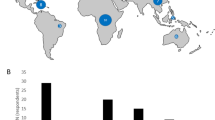Abstract
Species and habitat endangerment have reached a point where complacency toward conservation efforts is unacceptable. Powerful political forces oppose conservation of biodiversity, requiring a more coordinated effort to protect increasingly endangered biota. This calls for enhanced communication as conservation biologists in government agencies grasp for information that can best be produced by the university scientist. Ethics and reality now demand that scholarship of application be given at least equal consideration with scholarship of discovery. The same intense interest that inspires research carries with it a strong, implied obligation to pass on to future generations a biota undiminished from the one we inherited. Yet academe is fraught with researchers who, seemingly oblivious to deteriorating ecosystems and motivated to meet advancement requirements, often lose sight of a deeper, less egocentric direction. Advocacy in any form, they fear, may serve to compromise both objectivity and reputation, a situation often overlooked by critics within government who remain unaware of traditions and intransigence within the academy. Undergraduate curricula, and faculty selection and advancement criteria need to be restructured as a means of reaching an acceptable middle ground. Otherwise, we may soon find ourselves in the untenable position of having made major contributions to the literature of a rapidly disappearing biota that might have been saved by utilizing less flawed protocols and attitudes. A broadening of philosophies, goals, and values is mandatory, lest we lose sight of our mutual responsibility: the long-term integrity and welfare of the marvelous biological resource that comprises our stewardship and continues to evade our absolute comprehension.
Similar content being viewed by others
References cited
Clark, R.W. 1971. Einstein. the life and times. Quotation by Philipp Frank in ‘Einstein's Philosophy of Science’. Rev. Mod. Physics 21(3), July 1949.
Holden, P.B. 1991. Ghosts of the Green River: impacts of Green River poisoning on management of native fishes. pp. 43-54. In:W.L. Minckley & J.E. Deacon (ed.) Battle Against Extinction: Native Fish Management in the American West, University of Arizona Press, Tucson.
Hubbs, C.L. 1963. Secretary Udall reviews the Green River fish eradication program. Copeia 1963: 465-466.
Jewish Publication Society. 1985. Tanakh: a new translation of the Holy Scriptures, according to the traditional Hebrew text. The Jewish Publication Society, Philadelphia.
Kapuscinski, A. 1995. A common conservation ethic: communicating the way towards protection and sustainable use of aquatic biodiversity. pp. 36-50. In:D.P. Philipp et al. (ed.) Protection of Aquatic Biodiversity. Proc. World Fish Congr. Theme 3, Science Publishers, Lebanon.
Leopold, A. 1949. A Sand County almanac. Oxford University Press, New York. 173 pp.
Lovejoy, T.E. 1995. Will the top expectedly blow off? Science and Biodiversity Policy, BioScience Supplement 1995. pp. S-3 to S-6.
Mermann, A.C. 1992. Sad town, torn gown. The Pharos (Menlo Park) 55(3): 38.
Miller, R.R. 1961. Man and the changing fish fauna of the American Southwest. Pap. Mich. Acad. Sci., Arts. Letters 46: 365-404.
Minckley, W.L. & J.E. Deacon (ed.) 1991. Battle against extinction: native fish management in the American west. University of Arizona Press. Tucson. 517 pp.
Norton, B. 1987. A coherent rationale for species preservation. pp. 214-239. In:B.G. Norton (ed.) Why Preserve Natural Variety?, Princeton University, Princeton.
Noss, R.F. (ed.) 1996. Conservation biology, values, and advocacy. Cons. Biol. 10: 904-920.
Orr, D.W. 1991. Politics, conservation and public education. Cons. Biol. 5: 10-12.
Orr, D.W. 1992. For the love of life. Cons. Biol. 6: 487.
Orr, D.W. 1993. The problem of disciplines/the discipline of problems. Cons. Biol. 7: 11-12.
Partridge, E. (ed.) 1981. Responsibilities to future generations. Prometheus Books, Buffalo. 319 pp.
Philipp, D.P., J.M. Epifanio, J.E. Marsden, J.E. Claussen & R.J. Wolotira, Jr. (ed.) 1995. Protection of aquatic biodiversity. Proc. World Fish Congr. Theme 3. Science Publishers, Lebanon.
Pinsker, S. 1996. It's a great time to return to the ‘Great Books’. Christian Science Monitor, June 3 1996. 19 pp.
Pister, E.P. 1985. Desert pupfishes: reflections on reality, desirability, and conscience. Env. Biol. Fish. 12: 3-12.
Pister, E.P. 1987. A pilgrim's progress from group A to group B. pp. 221-232. In:J.B. Callicott (ed.) Companion to a Sand County Almanac. University of Wisconsin Press, Madison.
Pister, E.P. 1991. Desert Fishes Council: catalyst for change. pp. 55-68. In:W.L. Minckley & J.E. Deacon (ed.) Battle Against Extinction: Native Fish Management in the American West. University of Arizona Press, Tucson.
Pister, E.P. 1992. Ethical considerations in conservation of biodiversity. pp. 355-364. Trans. 57th N. Amer. Wildl. Nat. Res. Conf., Wildlife Management Institute, Washington, D.C.
Pister, E.P. 1993. Species in a bucket. Natural History 102(1): 14-18.
Schweitzer, A. 1969. Reverence for life. Harper and Row, New York. 153 pp.
Shafland, P.L. 1995. Introduction and establishment of a successful butterfly peacock fishery in southeast Florida canals. Amer. Fish. Soc. Symp. 15: 443-451.
Shafland, P.L. 1996. Exotic fish assessments: an alternative view. Rev. Fish. Sci. 4: 123-132.
Wallace, A.R. 1863. On the physical geography of the Malay Archipelago. J. Roy. Geogr. Soc. (London) 33: 234.
Wheeler, A. & D. Sutcliffe. 1990. The biology and conservation of rare fish. J. Fish Biol. 37(Suppl. A): 1-269.
Williams, J.E. & R.R. Miller. 1990. Conservation status of North American fish fauna in fresh water. J. Fish Biol. 37(Suppl. A): 79-85.
Author information
Authors and Affiliations
Rights and permissions
About this article
Cite this article
Pister, E.P. Professional obligations in the conservation of fishes. Environmental Biology of Fishes 55, 13–20 (1999). https://doi.org/10.1023/A:1007465012083
Issue Date:
DOI: https://doi.org/10.1023/A:1007465012083




